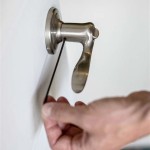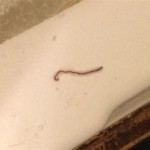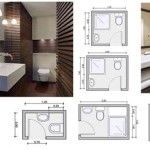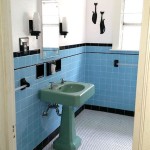Pop-Up Bathroom Sink Drain Without Overflow: A Comprehensive Guide
The pop-up bathroom sink drain is a common fixture found in many residential and commercial bathrooms. Its primary function is to allow water to drain from the sink basin while also providing a means to stop the flow of water to fill the sink. A specific variation of this drain is the pop-up drain without an overflow pipe. This type of drain is specifically designed for sinks that do not have an overflow opening. Understanding the characteristics, installation, maintenance, and potential issues associated with pop-up drains without overflow pipes is essential for homeowners, plumbers, and contractors.
The absence of an overflow pipe necessitates a different design and installation approach. An overflow pipe typically serves as a safeguard against flooding, allowing excess water to escape when the sink is full. When an overflow is not present, the sink relies solely on the drain's sealing mechanism to prevent water from escaping. Consequently, the selection, installation, and maintenance of the drain become even more critical.
This article will provide a comprehensive exploration of pop-up bathroom sink drains without overflow pipes, covering their components, functionality, installation procedures, common problems, and maintenance recommendations. This information is designed to equip individuals with the knowledge required to make informed decisions regarding their plumbing fixtures and ensure proper functionality of their bathroom sinks.
Key Point 1: Understanding the Components and Functionality
A pop-up drain without an overflow pipe consists of several key components working in concert to provide a watertight seal and controlled drainage. These components generally include the drain flange, drain body, tailpiece, stopper, and lift rod mechanism (or push-button mechanism in some models). Each part plays a specific role in the drain's overall operation.
The drain flange is the visible portion of the drain that sits inside the sink basin. It is typically made of metal (brass, stainless steel, or chrome-plated materials) and is designed to provide a smooth, corrosion-resistant surface. A rubber or silicone washer is usually placed underneath the flange to create a watertight seal between the flange and the sink basin. The drain body is the threaded section that extends below the sink basin, connecting to the tailpiece. The tailpiece is a pipe segment extending downwards from the drain body, which connects to the P-trap assembly, and ultimately carries wastewater to the drainage system.
The stopper is the component responsible for sealing the drain opening. It is typically made of metal or plastic and is designed to fit snugly within the drain flange. The stopper is connected to the lift rod mechanism, which enables the user to raise or lower the stopper to control the flow of water. An alternative design utilizes a push-button mechanism; pressing the button once seals the drain, and pressing it again releases it.
In the case of pop-up drains without an overflow, the stopper's sealing function is paramount. Since there is no overflow to handle excess water, the stopper needs to create a complete and reliable seal to prevent leaks or accidental flooding. The absence of the overflow also means that the drain's design focuses specifically on efficient water drainage when the stopper is in the open position.
The functionality of the drain relies on the proper assembly and adjustment of these components. The drain flange must be securely tightened to the sink basin, and the stopper mechanism must be properly aligned to ensure a smooth and reliable opening and closing action. Any misalignment or looseness can compromise the drain's ability to create a watertight seal or drain water effectively.
Key Point 2: Installation Procedures and Considerations
Installing a pop-up drain without an overflow pipe requires careful attention to detail to ensure a leak-free and functional system. The installation process generally involves several steps, starting with the removal of the old drain (if applicable) and preparing the sink basin for the new drain. Before starting any work, it is essential to shut off the water supply to the sink.
The first step is to disassemble the old drain assembly, if one is present. This typically involves loosening the connections between the tailpiece, drain body, and the P-trap. Once the old drain is removed, the sink basin should be thoroughly cleaned to remove any debris or old sealant. This ensures a clean surface for the new drain's seal.
The next step involves preparing the new drain assembly. Apply plumber's putty or silicone sealant to the underside of the drain flange, ensuring a continuous bead around the entire perimeter. This sealant will help create a watertight seal between the flange and the sink basin. Insert the drain flange into the drain opening in the sink basin, pressing it firmly into place.
From underneath the sink, attach the drain body to the drain flange. Secure the drain body with the provided hardware, typically a large nut. Tighten the nut securely, but avoid over-tightening, which could damage the sink basin or the drain components. Ensure that the drain flange remains properly aligned during the tightening process. As the nut is tightened, excess plumber's putty will be forced out. Remove the excess putty with a putty knife, ensuring a clean finish.
Connect the tailpiece to the drain body, ensuring a tight and secure connection. The tailpiece is typically connected using a slip joint connection, which includes a slip nut and a washer. Tighten the slip nut by hand, and then use a wrench to tighten it further, but be careful not to overtighten and damage the pipe. Finally, connect the tailpiece to the P-trap assembly, ensuring all connections are secure and leak-free.
After the drain assembly is complete, test the drain for leaks by running water into the sink. Check all connections for any signs of leakage. If leaks are detected, tighten the connections further or reapply sealant as needed. Ensure the stopper functions correctly, creating a watertight seal when closed and allowing water to drain freely when open. Adjust the lift rod mechanism or push-button mechanism as needed to achieve proper operation.
Key Point 3: Common Problems and Maintenance
Despite proper installation, pop-up drains without overflow pipes can experience various problems over time. These problems can range from minor inconveniences like slow drainage to more serious issues like leaks or complete drain failure. Regular maintenance and timely repairs are essential to keep the drain functioning properly.
One common problem is slow drainage. This can be caused by a buildup of hair, soap scum, or other debris in the drainpipe. To address slow drainage, try using a plunger to dislodge the clog. If the plunger is ineffective, try removing the stopper and cleaning out any visible debris from the drain opening. A bent wire or a specialized drain cleaning tool can be used to remove more stubborn clogs. In severe cases, it may be necessary to disassemble the P-trap to remove the clog.
Leaks are another common problem. Leaks can occur at various points in the drain assembly, including the connection between the drain flange and the sink basin, the connections between the drain body and the tailpiece, or the connection between the tailpiece and the P-trap. To address leaks, first identify the source of the leak. Tighten the connections at the leak point. If tightening the connections does not stop the leak, it may be necessary to replace the sealant or the washers at the connection.
A malfunctioning stopper mechanism can also cause problems. If the stopper does not seal properly, water can leak out of the sink even when the drain is closed. If the stopper does not open or close smoothly, it can be difficult to control the flow of water. To address a malfunctioning stopper mechanism, inspect the lift rod or push-button mechanism for damage or misalignment. Adjust the mechanism as needed to ensure proper operation. If the mechanism is damaged, it may need to be replaced.
Preventative maintenance can help minimize the risk of problems with pop-up drains without overflow pipes. Regularly flush the drain with hot water to help prevent the buildup of soap scum and other debris. Avoid pouring grease or other oily substances down the drain, as these can solidify and cause clogs. Periodically inspect the drain assembly for leaks or loose connections and tighten or repair as needed. Consider using a drain strainer to catch hair and other debris before they enter the drainpipe.
In summary, understanding the specific considerations of pop-up bathroom sink drains without overflow pipes, their components, installation methods, and potential problems, are vital to ensure efficient and long-lasting functionality. Regular checks and preventative measures should be implemented to maintain the drain's optimal performance.

Moen Lavatory Pop Up Drain Assembly Without Overflow In Chrome 140780 The Home Depot

Zeek Dn200 Brushed Nickel Pop Up Drain No Overflow

Pf Waterworks Chrome Bathroom Sink Pop Up Drain Pf0730 Ch No At Com

Bwe Bathroom Sink Pop Up Drain Without Overflow In Antique B 9plt 02 Anti The Home Depot

Pop Up Drain Without Overflow Barclay S Limited

1 3 4 Bathroom Sink Pop Up Drain Stopper Without Overflow Basin Vessel W Tray

Kohler 7114 Undefined Premier Pop Up Drain Exposed Without Overflow

Parlos Bathroom Sink Drain Without Overflow Metal Pop Up For Vessel Chrome 2108601

Westbrass Pop Up Bathroom Sink Drain Assembly Stopper With Lift Rod Without Overflow Holes Exposed Satin Nickel D412 12 07 The Home Depot

Pf Waterworks Brushed Nickel Bathroom Sink Pop Up Drain Pf0735 Bn Gr No At Com
Related Posts







